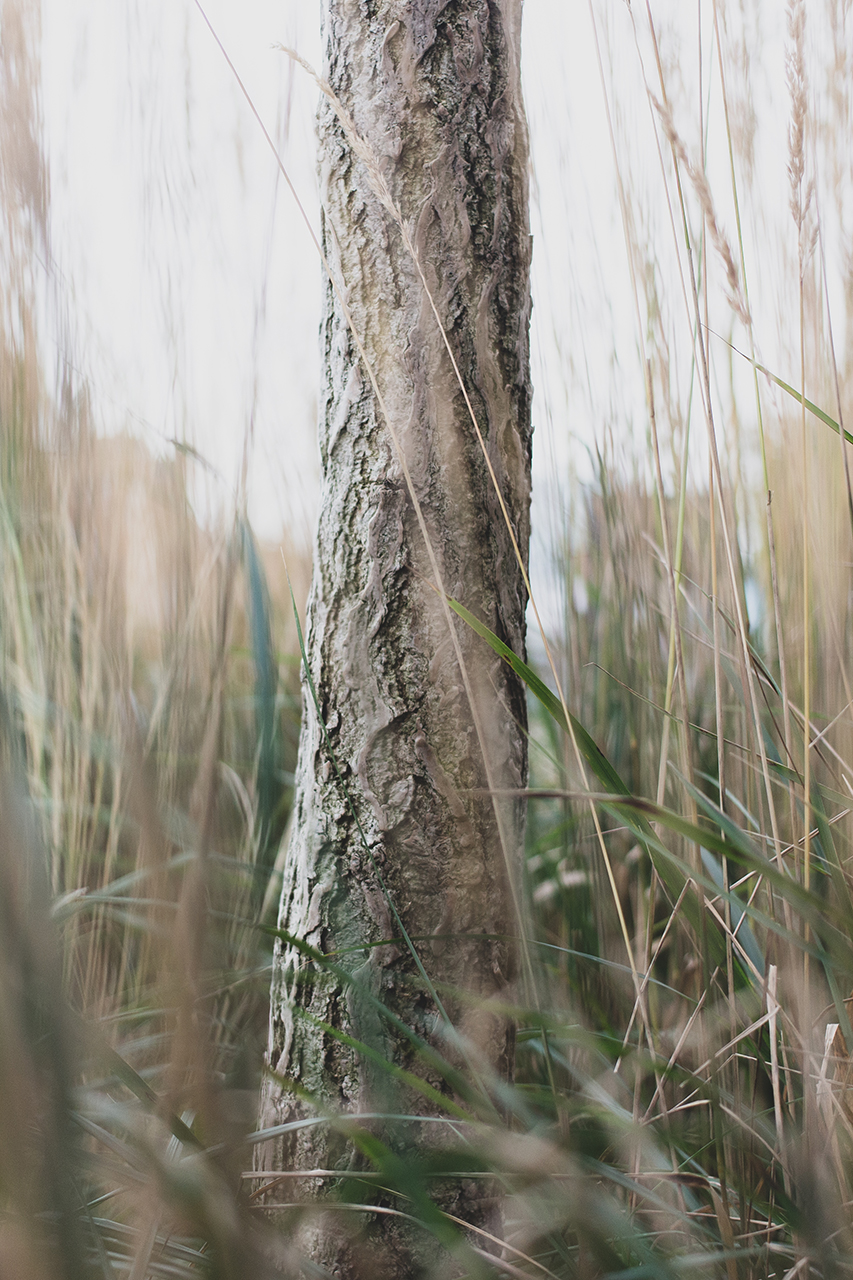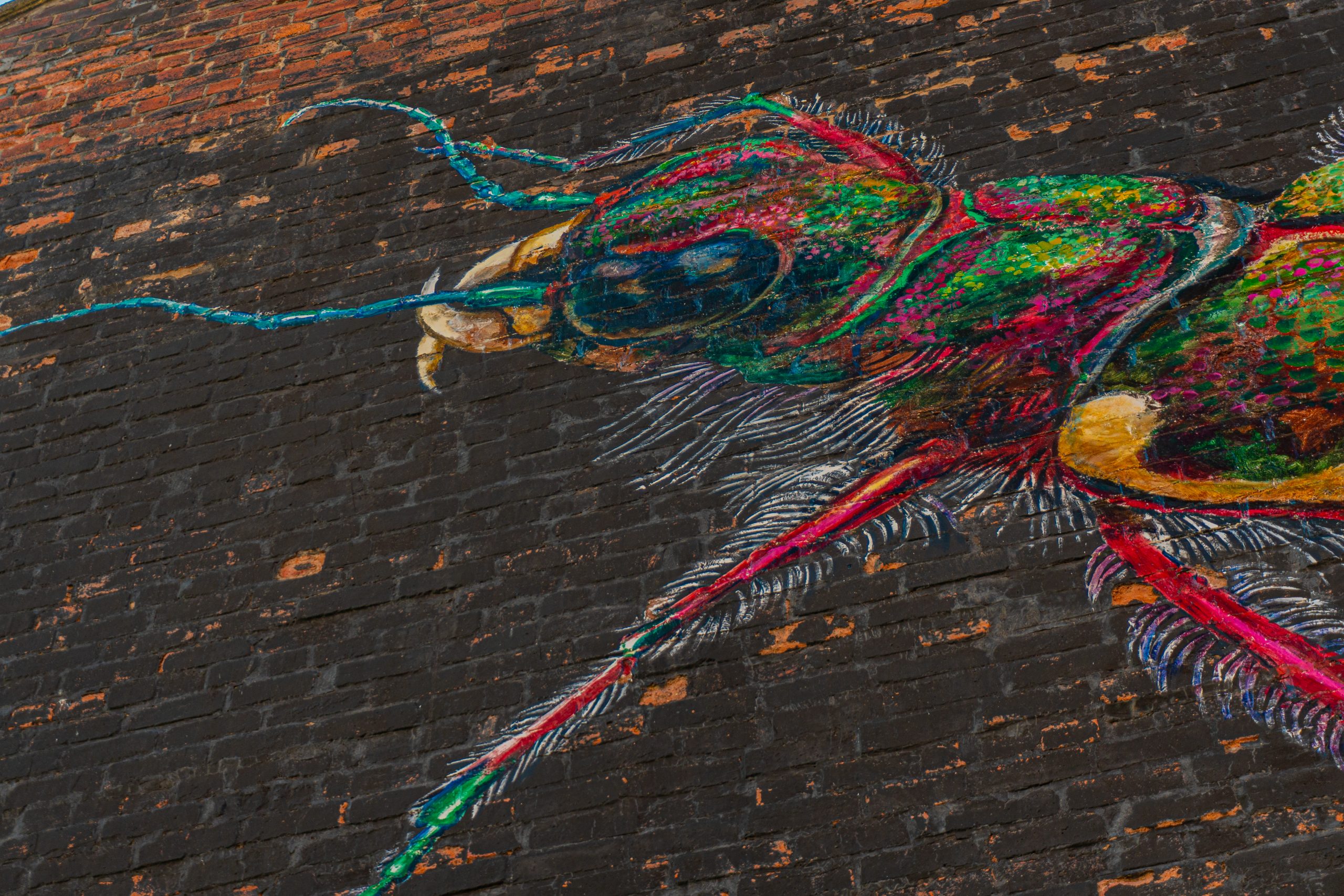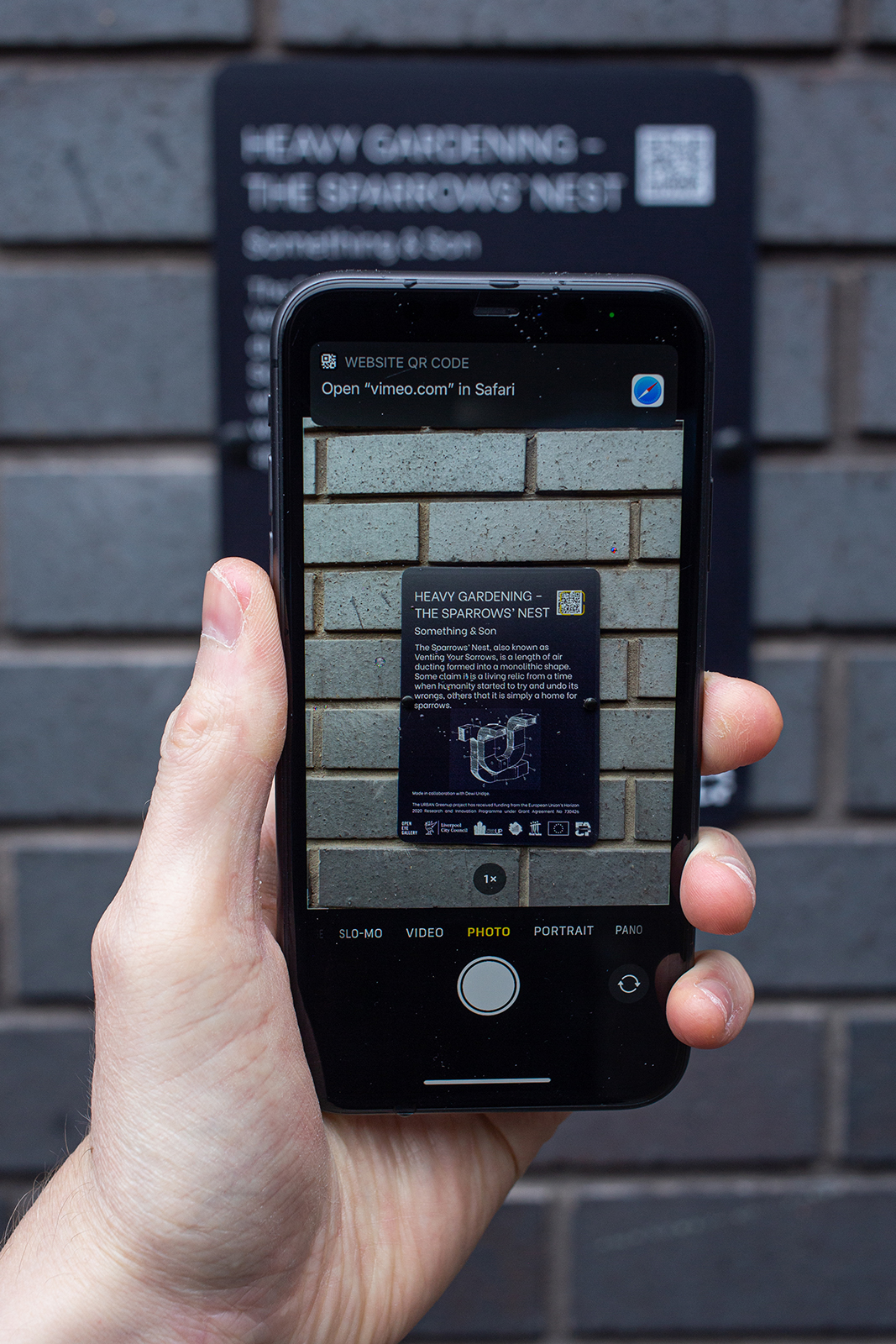
How dot-art is combating climate change
At dot-art we passionately believe that we all need to play our part in addressing the climate crisis. We are taking a two pronged approach to sustainability; learning, monitoring and changing our own habits and practices (internal) and developing and managing a range of green focused art projects to help influence the public’s attitudes and behaviours towards the planet (external).
Internal:
- Following our work with the LJMU Eco-Innovatory, who have measured our carbon footprint and given us the tools to continue to measure and reduce this, we are now offically CARBON NEUTRAL! From 2019 to 2023, we produced 11.1 tonnes of carbon. Through our work with Ecologi (see below), we have so far offset over 90 tonnes of carbon, as well as planting over 4400 trees.
- Our carbon footprint for 2023 was 22% lower than 2019 (our last full pre-pandemic year; a better measure than the figures for 2020 and 2021 which were artifically low) and 4% lower than 2022. We will continue to drive this down by choosing our suppliers, activities and partners carefully.
- We fully embrace the circular economy; our office furniture is all pre-owned, our laptops are refurbished, and all our packaging is reused when sending out orders (we do explain that parcels may not look pretty, but they are helping to save the environment!
- We have completed Carbon Literacy Training (you can see the certificate here!) to ensure we are informed on all the issues surrounding the green agenda.
- We sit on the steering group for SHIFT, the sustainability group for Liverpool’s cultural sector, which brings us together to collaboratively respond to these challenges.
- We are part of the Ecologi community who fund the world’s best climate crisis solutions. It’s now common knowledge that one of the best tools to tackle the climate crisis and keep our temperatures from rising above 1.5C is to plant trees. They are also crucial to preventing ecological collapse. As a climate positive workforce, we are offsetting all of the carbon we produce as employees, we have also opted for an additional plan which offsets all of the carbon that our website generates on an annual basis, planting a minimum of 600 trees per year. PLUS – for every new client that shops with dot-art we plant a tree and (new for 2024) for every new artist member that joins the dot-art community, we restore one square metre of UK wildlife habitat.


External:
The Story of Liverpool Through Its Trees
In November 2020, together with our friends Open Eye Gallery, dot-art announced an exciting new project, inviting the public to create a history of Liverpool through its trees, using personal stories and photography!
In these times of global crisis, we all benefit from taking a step back and seeing our own experiences in a wider historical context. The city and its trees have survived war, disease and many other hardships; this pandemic is just the most recent.
In February 2022 we were delighted to announce a NHLF grant of £70,000 to allow us to grow and expand this project. For the next 18 months we will work with schools, community groups and the general public to collect more tree stories and then share them on a new, interactive website.
We want to celebrate your stories of trees and they will become stories of this place we live and work in. Please take a moment to share a picture of a tree that means something to you, along with a few words about what makes it important.
Get involved and send your stories to andy@openeye.org.uk
On The Brink – Exhibition in dot-art Gallery
From 28th January to 19th March 2022, the dot-art Gallery hosted an exhibition of seven artists work, entiled On The Brink, looking at species loss in the UK.
The Earth has always known species loss, from the dinosaurs onwards, but we are now seeing this loss at hugely accelerated rates, due the actions of humans. Generation by generation we see our animal kingdom and natural surroundings changing drastically; not only is there a reduction in the diversity of species, but a loss of their habitats, homes and means of survival. More and more species find themselves on the brink.
After COP26 the feeling now, more than ever, is one of impatience, that we are heading for disaster and cannot see the actions needed for preventing global warming, species loss and catastrophic weather events. Such a large global issue that affects everyone in the world can often feel too large to contemplate; This exhibition pulls focus to the impact of climate change to species and habitats in the UK. Each of the seven exhibiting artists has examined aspects of nature and wildlife affected by climate change and used the visual to give a face to this issue that seems too big to see, yet is staring us in the face.
The exhibition was inspired by a series of work produced by Chris Routledge. Chris created a series of cyanotypes of Larch trees with orange slashes of enamel paint cutting through. Larch trees are dying from fungal infection, which has spread from the international plant trade, and thrives in the warmer climate Britain is now experiencing. More worryingly, the disease affects many other types of trees and to prevent the spread of the disease larches are being felled across northern England. First, they are marked with an orange dot to be sentenced for cutting down. The orange splash of colour in these works which is applied with a glass rod also represent the sap of a freshly cut Larch.



Natural Kingdom: Wild Walls:
In July 2021, dot-art worked with The Good Business Festival and UK Youth for Nature to bring an iconic new mural to Liverpool’s Baltic Triangle. The giant painting of a Northern Dune Tiger Beetle is the first piece of work to be commissioned as part of the Natural Kingdom: Wild Walls project, which aims to raise awareness of biodiversity and the crucial role it plays in the climate crisis. Nature and climate are interlinked: climate change is one of the greatest threats to the natural world, but restoring nature can tackle climate change by locking away carbon in healthy ecosystems.
Internationally renowned street artist ATM has created a gigantic version of this highly endangered species, which can be seen on the corner of Grafton Street and Stanhope Street in Liverpool’s Baltic Triangle. The beetle was chosen, after discussions with local experts, as 75% of the remaining population can be found in Merseyside’s sand dunes.
41% of the UK’s species are declining, with 13% of these at risk of extinction in the UK. Climate change is one of the main drivers of the loss of wildlife across the countryside. The group is also highlighting that restoring nature could help to lock up 123 million tonnes of greenhouse gases by 2030 in natural habitats.
As well as Liverpool, other murals are planned for cities including Manchester, Belfast, Cardiff, Aberystwyth, Nottingham, and London. 2021 is the year of the UN’S biodiversity and climate conferences, that UK Youth for Nature say will set the course for the environment for the next decade.
UKY4N will go on to amplify their message at the Good Business Festival Youth Summit alongside Liverpool World Centre, the British Antarctic Survey and the Metal Arts Collective, with reorganised dates soon to be announced! The wall and accompanying activities will be part of The Climate Coalition’s Great Big Green Week. Members of the public can scan a QR code on the wall and will be able to head to the website to find out more.
Heavy Gardening
dot-art was commissioned to produce a trail of seven art works, launched in May 2021, running from the back of FACT on Fleet Street, along the Baltic Corridor to Wapping Dock, produced by internationally renowned artist Andrew Merritt of Something & Son, in partnership with dot-art, Open Eye Gallery and First Take, as part of Liverpool City Council’s Urban GreenUP, project which seeks to raise awareness about the future predicted impacts of climate change. Andrew has transformed seven small pieces of public infrastructure and human engineering to make them useful habitats for other species.
The Urban GreenUP programme is targeted at research into the potential of green infrastructure solutions to tackle the predicted future impacts of climate change. As such the plan is to use a range of natural planting and water solutions to tackle city issues such as localised surface water flooding, poor air and water quality, summer heat effects and the lack of biodiversity
Liverpool City Council will lead on working with local communities and stakeholders to introduce green infrastructure to a green corridor that links Bold Street to the waterfront. The physical changes will include vertical green walls; rain gardens, trees, pollinator spaces and verges and resting areas together with opportunities for community engagement and community art.
Apart from urban green transformation, the project is expected to achieve important results in other fields too. Urban GreenUP will improve life quality in urban areas, raise awareness on the importance of environment preservation among citizens, generate new market opportunities for European companies at an international level, and foster the creation of transnational networks and synergies.
Last but not the least, and this is where the the Heavy Gardening Art Trail is particularly important, it will highlight the importance of the local communities’ active participation when addressing climate problems through cocreation activities also directly involving the citizens, who are at the core of their cities’ green regeneration.
Watch a panel discussion on the subject: Heavy Gardening – A Cross Sector Approach to the Green Agenda.


